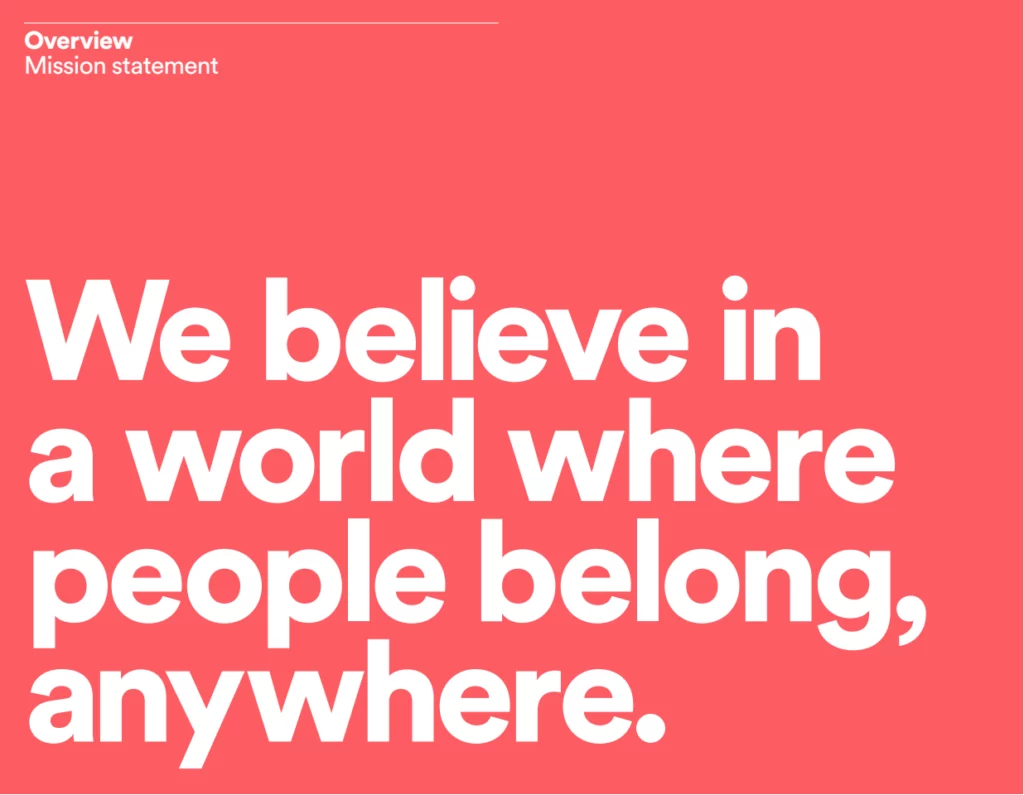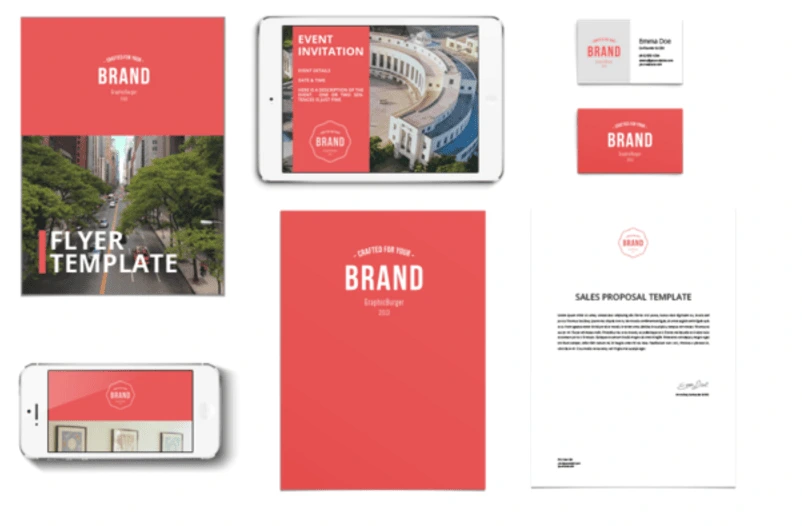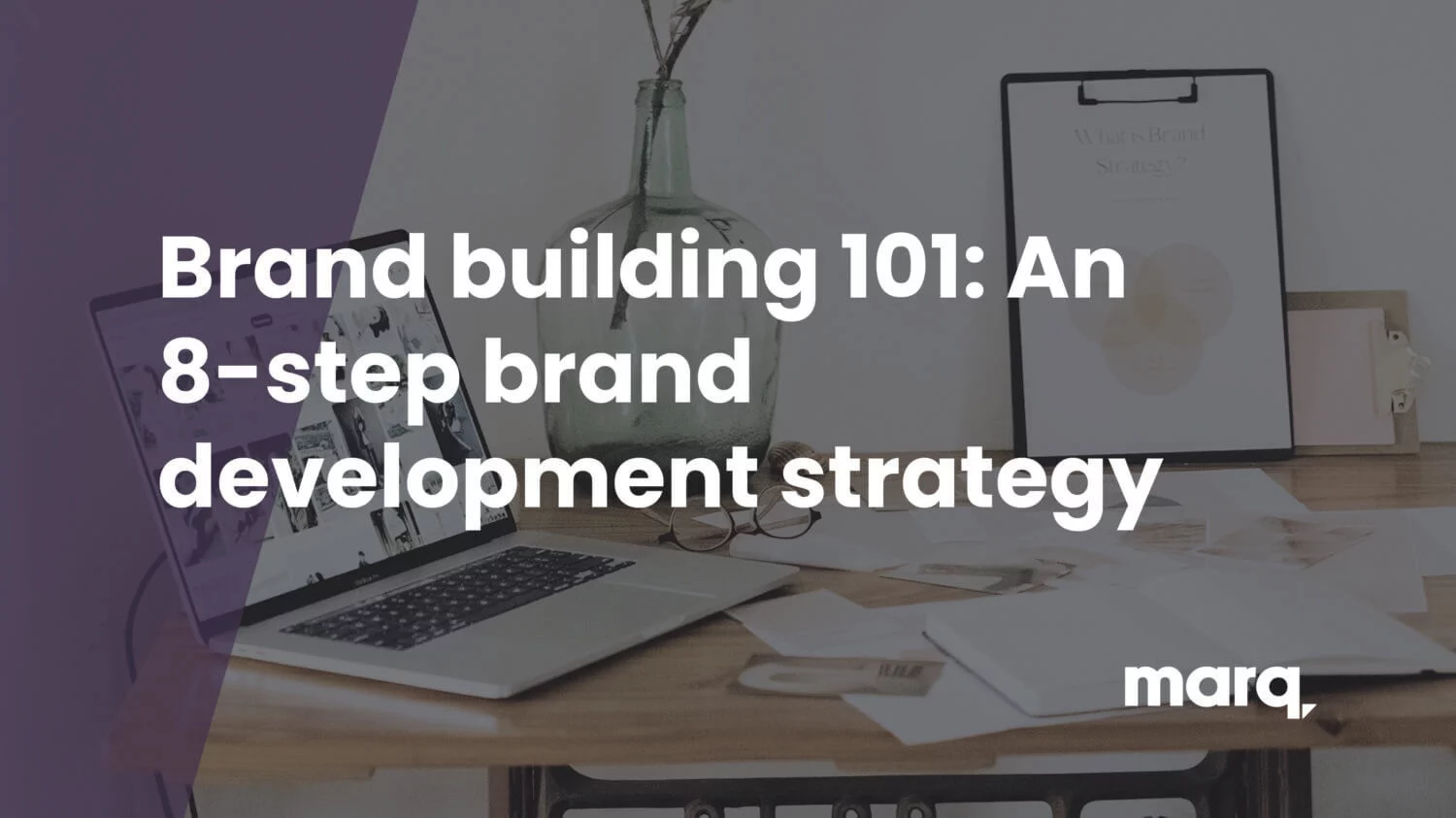Building a brand is easy to do. Building a strong, sucessful brand that stands the test of time, people, and competitors? Now that’s a different story. Here is an 8-step guide to building a brand development strategy.
Your brand comprises essential elements like positioning, personality, logo design, color scheme, tagline, etc.
All components are crucial to thoughtfully building your brand to stand against competitors and win.
Related: The 7 key elements of brand identity design
It can feel overwhelming but before you start to panic about the sustainability of your small business and your brand equity, keep in mind that developing a lasting brand strategy is within reach, you just have to know the right formula. Read on to learn how to develop a strong brand strategy
Brand building is the process of shaping customers’ emotions, feelings, memories, and opinions associated with your brand through a strategy-driven plan that stands the test of time and people.
Brand Development Process and Strategies:
Step 1: Establish what your brand represents, at its core.
Create a list of your business’s core strengths. Why was the business started to begin with? What problem did the founder (you?) set out to solve?
One great way to succinctly summarize your brand’s purpose is to create a mission statement. Airbnb for example does a great job of providing a mission statement that clearly defines values, benefits, and quality all at once.

Your mission statement doesn’t even have to be displayed to the public for it to be impactful. Using one as an internal guiding light can still provide the vision and inspiration your employees need to know exactly what the company stands for and how their work should reflect that on a daily basis.
Step 2: Keep your brand distinct from its competitors.
Is it possible to sell the exact same product as competitors but still differentiate somehow? Yes. And companies do it all the time.

In the endless Apple vs. Android wars, the brands continue to differentiate themselves through strong branding, campaign messaging, and product offerings. You know them and you are likely very familiar with the ongoing competition.
The secret to competitive marketing is in your brand. It’s not just your product; it’s how you position your brand personality compared to everyone else.
Take a deep look at the competitive field, find out how others are marketing their successful brands, then throw it all out the window and get creative.
Step 3: Determine your target audience.
As good as your intentions may be, your business simply can’t be everything to everyone.
Don’t be afraid to get specific and think about exactly the kind of person that would most benefit from your product or service. The more specific, the easier it is to target them with messaging that resonates.
It may be tempting to skip this part of the process (or to continue ignoring it if your business already seems to be doing well), but brand building is about building for the long term, and the more generic your targeting is… the more generic your brand becomes down the road.
Step 4: Create an elevator pitch.
At Marq, we have messaging that answers what we are, what we do, and the problems we solve for.
Here is an example:
For marketing and brand leaders who need to drive business growth, Marq is the brand-templating platform that enables businesses to deliver relevant content to their audience faster, by empowering everyone in the organization to build on-brand content.
Unlike desktop publishing software or design tools built for individuals, Marq is built for enterprise readiness with lockable brand templates, creative automation, and highly customizable team management.Marq Messaging
The value in having a well-thought-out statement that everyone can access, which quickly explains exactly what we do, enables everyone to clearly understand our brand positioning.
Step 5: Build out your brand.
Now that you’ve determined the foundation of your brand and what it stands for, it’s time to put everything into action. That means creating a style guide, determining your brand personality, formulating your brand’s strategy, and making sure everyone is on the same page.
Food for thought: Broadway productions don’t tell great stories by simply creating ravishing brochures, and businesses don’t tell great stories by simply designing clever logos.
Your brand is the feeling your ads evoke, the kind of people you hire, the friendliness of your support team, your brand’s voice, your brand’s visuals, your business’s values… your brand is everything your business produces and represents. Make this step of the brand building process priority from the beginning and your brand will have the life and depth it needs to strengthen your business’s image.
Step 6: Promote away.
This is the fun part. We all know what promotion means, but the right promotion can mean different things for different businesses. So whether it’s social media, radio ads, magazine covers, YouTube videos, billboards, PPC, content marketing, or guerrilla marketing — figure out where your target market already is and then go to them. A whole article could be dedicated to this subject, but for now just make note that this step is important for raising brand awareness, and you should dedicate a lot of time to it.
Step 7: Personalize, personalize, personalize.
As much as you can, at least. It’s 2023 and consumers expect their products and businesses to get smarter about how they speak to them. That means understanding your target audience’s pain points, getting on social media, using their first name in emails, etc. are examples of content personalization. Robotic language, over-enthusiasm, and baby talking are looked down on and feel inauthentic. So get real, and find out the tone of voice your customers most appreciate.
Step 8: Consistency is key.
You can build a brand for the books, but it’s not going to last long if you don’t figure out a way to guarantee it stays consistent. What happens when Sandra from Sales stretches your logo? Or Evan from Events changes the color scheme on a branded flyer to orange and pink?
Zillions (to be exact) of brand managers face these harrowing situations every day and watch their strategically-built brands fall apart in the hands of well-intentioned employees.
One of the best ways to protect your brand from rogue content and inconsistencies is with web-based lockable templates. That way, beautiful branded content can start with your graphic designers and still look just as beautifully on-brand by the time it reaches your customers.

Your graphic designers can lock down the elements of your brand that should never be changed (logo, fonts, images, etc.) before sending the template off to other employees in the company to put to use. Pretty enticing, right? Saying goodbye to brand inconsistencies forever is one massive sigh of relief for brand managers, and anyone who cares about properly building your brand equity, for that matter.
If brand consistency is something your business could stand to improve as part of your brand management strategy, consider trying Marq. With Marq, you can import your business-branded templates (or create them directly in Marq), and share them across teams. Lockdown critical brand elements and no longer worry about content being produced that is off-brand.



